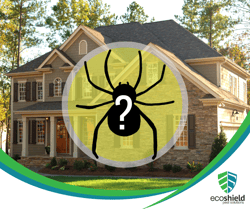 As homeowners, we often find ourselves sharing our living spaces with a variety of creatures, and spiders are no exception. While some homeowners may be indifferent to these arachnids, others might be curious or even concerned about the different spider species that occasionally take up residence indoors. In this blog post, we'll be your guide to identifying common spiders found in homes, helping you distinguish between harmless house guests and potentially problematic intruders. From the petite cobweb spinners to the elusive cellar dwellers, we'll unravel the secrets of our arachnid cohabitants, empowering you to coexist comfortably with the diverse spider population within your abode. So, grab a magnifying glass and join us on this arachnological adventure as we shed light on the fascinating world of spiders in your home.
As homeowners, we often find ourselves sharing our living spaces with a variety of creatures, and spiders are no exception. While some homeowners may be indifferent to these arachnids, others might be curious or even concerned about the different spider species that occasionally take up residence indoors. In this blog post, we'll be your guide to identifying common spiders found in homes, helping you distinguish between harmless house guests and potentially problematic intruders. From the petite cobweb spinners to the elusive cellar dwellers, we'll unravel the secrets of our arachnid cohabitants, empowering you to coexist comfortably with the diverse spider population within your abode. So, grab a magnifying glass and join us on this arachnological adventure as we shed light on the fascinating world of spiders in your home.
Why is proper spider identification important?
Proper spider identification is crucial for homeowners for several reasons, ranging from peace of mind to potential safety concerns. First and foremost, understanding the types of spiders inhabiting your home can alleviate unnecessary fears and misconceptions. Most spiders found indoors are harmless and play a vital role in controlling other pests like flies and mosquitoes, contributing to a natural pest management system. By identifying these arachnids, homeowners can distinguish between harmless species and those that may pose a risk, easing anxiety and fostering a coexistence mindset.
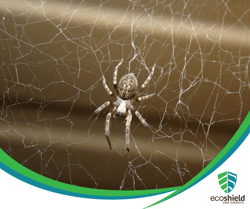 Additionally, some spiders have distinct behaviors that can impact your living space. Knowing whether a spider builds webs, prefers dark corners, or tends to dwell in damp areas can aid in locating and addressing potential entry points or areas of concern. Certain spiders, like the brown recluse or black widow, can deliver venomous bites that may require medical attention. Accurate identification helps homeowners take appropriate precautions, such as implementing preventive measures or seeking professional assistance when necessary.
Additionally, some spiders have distinct behaviors that can impact your living space. Knowing whether a spider builds webs, prefers dark corners, or tends to dwell in damp areas can aid in locating and addressing potential entry points or areas of concern. Certain spiders, like the brown recluse or black widow, can deliver venomous bites that may require medical attention. Accurate identification helps homeowners take appropriate precautions, such as implementing preventive measures or seeking professional assistance when necessary.
Moreover, recognizing different spider species can be a valuable tool in pest control. Identifying the specific spider that preys on a particular pest can help homeowners indirectly manage other insect populations. By fostering an understanding of the spider's role in the ecosystem, homeowners can appreciate their ecological contribution and make informed decisions about whether intervention is necessary.
What species of spiders can I expect to find in my home?
US homeowners can encounter a diverse array of spider species within their homes, each with its own unique characteristics and behaviors. Among the notable inhabitants are black widows (Latrodectus spp.), known for their distinctive webs and potent venom. While their presence may be disconcerting, black widows generally keep to themselves unless disturbed. Brown recluse spiders (Loxosceles spp.) are another species that might be found indoors, often preferring secluded spaces. These spiders are reclusive and typically avoid human interaction.
Cellar spiders (Pholcidae) are frequently found in basements, closets, and other secluded areas, earning them the nickname "daddy longlegs." These delicate arachnids are skilled at web construction and are more helpful than harmful to homeowners, as they feed on other insects. Orb-weavers (Araneidae) are another common house spider; though their intricate, circular webs are commonly found outdoors, they may occasionally venture inside in search of prey.
Wolf spiders (Lycosidae) are agile hunters that may be encountered indoors, particularly in areas with access to the outdoors. Hobo spiders (Eratigena agrestis) are another spider often associated with dark corners and are known for their distinctive funnel-shaped webs. House spiders (Parasteatoda tepidariorum) are adaptable and can thrive in various environments, creating messy webs in corners and crevices, more commonly referred to as cobwebs.
Sac spiders (Clubionidae) construct silk retreats and are adept hunters, often wandering indoors in search of prey. Funnel-weaver spiders (Agelenidae) build funnel-shaped webs and are frequently found in grassy or wooded areas where they may end up indoors by accident or in a quest for more hospitable living conditions. While these spiders vary in appearance, understanding their general behaviors and habitats can help homeowners coexist more comfortably with their eight-legged neighbors.
Spider Identification Guide for Homeowners
Black Widow Spider
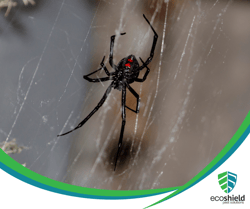 Identifying black widow spiders (Latrodectus spp.) is important for homeowners to distinguish them from other spiders and to take appropriate precautions due to their potentially venomous bites. Black widow spiders are known for their distinctive appearance, characterized by a shiny black body with a red or orange hourglass-shaped mark on the underside of the abdomen. This hourglass mark is a key identifying feature and serves as a warning sign for potential danger.
Identifying black widow spiders (Latrodectus spp.) is important for homeowners to distinguish them from other spiders and to take appropriate precautions due to their potentially venomous bites. Black widow spiders are known for their distinctive appearance, characterized by a shiny black body with a red or orange hourglass-shaped mark on the underside of the abdomen. This hourglass mark is a key identifying feature and serves as a warning sign for potential danger.
In addition to the hourglass mark, black widow spiders exhibit a round, bulbous abdomen and long, slender legs. The females, which are larger than the males, are the ones typically associated with venomous bites. While black widow spiders are reclusive and generally avoid human contact, they may be found in secluded areas such as woodpiles, garages, or dark corners of basements.
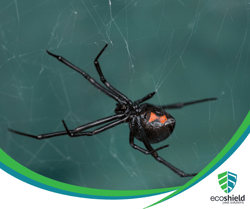 When identifying black widow spiders, it's essential to exercise caution and avoid unnecessary contact. If you come across a spider fitting the description, it's advisable to observe from a safe distance or seek professional assistance for proper identification. While black widow bites are rare and typically not fatal, they can cause severe reactions in some individuals. If bitten, it's crucial to seek medical attention promptly. Homeowners should prioritize prevention by keeping indoor and outdoor spaces tidy, reducing clutter, and sealing potential entry points to minimize the likelihood of encountering black widow spiders within their living spaces.
When identifying black widow spiders, it's essential to exercise caution and avoid unnecessary contact. If you come across a spider fitting the description, it's advisable to observe from a safe distance or seek professional assistance for proper identification. While black widow bites are rare and typically not fatal, they can cause severe reactions in some individuals. If bitten, it's crucial to seek medical attention promptly. Homeowners should prioritize prevention by keeping indoor and outdoor spaces tidy, reducing clutter, and sealing potential entry points to minimize the likelihood of encountering black widow spiders within their living spaces.
Brown Recluse Spider
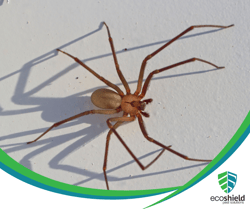 Identifying brown recluse spiders (Loxosceles spp.) is crucial for homeowners, as these arachnids are known for their venomous bites and reclusive behavior. Brown recluse spiders are typically light to medium brown in color, with a distinctive violin-shaped marking on their cephalothorax, or "head." This marking is a key characteristic, earning them the nickname "fiddleback spiders." However, it's important to note that the absence of this marking does not necessarily rule out a brown recluse, as some individuals may lack it.
Identifying brown recluse spiders (Loxosceles spp.) is crucial for homeowners, as these arachnids are known for their venomous bites and reclusive behavior. Brown recluse spiders are typically light to medium brown in color, with a distinctive violin-shaped marking on their cephalothorax, or "head." This marking is a key characteristic, earning them the nickname "fiddleback spiders." However, it's important to note that the absence of this marking does not necessarily rule out a brown recluse, as some individuals may lack it.
These spiders have uniformly colored legs without stripes or bands, and their bodies are covered in fine hairs. Adult brown recluse spiders typically have a leg span ranging from about 0.75 to 1 inch (1.9 to 2.5 cm). They possess six eyes arranged in three pairs, a feature that distinguishes them from many other spider species. The arrangement of these eyes forms a distinctive semicircle.
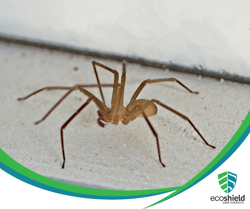 Brown recluse spiders are known for their reclusive nature, often hiding in dark, undisturbed areas such as closets, basements, and attics. They construct irregular webs, usually not for catching prey but for shelter. If homeowners suspect the presence of brown recluse spiders, it's advisable to exercise caution and seek professional assistance for proper identification and, if necessary, pest control measures. Additionally, understanding their preferred habitats and behavior can help homeowners reduce the risk of encounters with these spiders.
Brown recluse spiders are known for their reclusive nature, often hiding in dark, undisturbed areas such as closets, basements, and attics. They construct irregular webs, usually not for catching prey but for shelter. If homeowners suspect the presence of brown recluse spiders, it's advisable to exercise caution and seek professional assistance for proper identification and, if necessary, pest control measures. Additionally, understanding their preferred habitats and behavior can help homeowners reduce the risk of encounters with these spiders.
Cellar Spider
Cellar spiders, commonly known as "daddy longlegs," are distinctive arachnids that homeowners may encounter indoors. These spiders belong to the family Pholcidae and are recognized by their long, delicate legs and small bodies. Unlike many other spider species, cellar spiders have an elongated and fragile appearance, and their legs can be up to several times the length of their bodies. These spiders are typically light brown or gray in color.
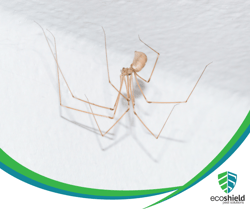 Cellar spiders are skilled web builders and construct messy, irregular webs in corners and other secluded areas of homes, earning them their nickname. The webs may have a tangled appearance and are not as organized or symmetrical as those of some other spiders. These arachnids are known for their agility and use their webs to catch prey, primarily other insects.
Cellar spiders are skilled web builders and construct messy, irregular webs in corners and other secluded areas of homes, earning them their nickname. The webs may have a tangled appearance and are not as organized or symmetrical as those of some other spiders. These arachnids are known for their agility and use their webs to catch prey, primarily other insects.
One distinctive feature of cellar spiders is their habit of vibrating their webs when disturbed, creating a rapid and noticeable movement. This behavior is believed to serve as a defense mechanism against potential predators. Cellar spiders are generally harmless to humans and are considered beneficial because they help control other insect populations. Homeowners encountering cellar spiders can appreciate their pest-controlling role and coexist with these arachnids by allowing them to thrive in less frequented areas of the home.
Orb-weaver Spider
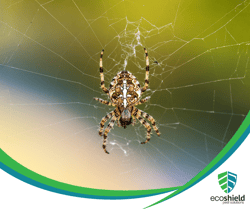 Orb-weaver spiders are a diverse group of arachnids known for their intricate, circular webs, and homeowners may encounter them both indoors and outdoors. These spiders belong to the family Araneidae and come in various shapes and sizes, but they share some common characteristics. Orb-weavers typically have a bulbous abdomen and relatively short, robust legs. Their bodies can display a range of colors, including browns, yellows, and greens, often with distinctive patterns or markings.
Orb-weaver spiders are a diverse group of arachnids known for their intricate, circular webs, and homeowners may encounter them both indoors and outdoors. These spiders belong to the family Araneidae and come in various shapes and sizes, but they share some common characteristics. Orb-weavers typically have a bulbous abdomen and relatively short, robust legs. Their bodies can display a range of colors, including browns, yellows, and greens, often with distinctive patterns or markings.
One of the defining features of orb-weavers is their remarkable web-building skills. The orb-shaped webs are constructed with precision and can vary in size depending on the species. These webs are designed to catch flying insects, and orb-weavers are often found hanging upside down in the center of their creations, awaiting prey.
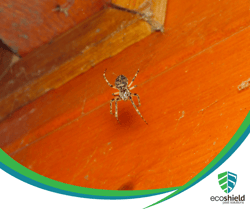 While identifying specific orb-weaver species may require a closer look at finer details, such as markings and colors, homeowners can generally recognize these spiders by their circular webs and distinctive body shapes. Orb-weavers are generally harmless to humans and provide a valuable service by controlling flying insect populations around homes and gardens. As beneficial predators, they contribute to natural pest management and can be appreciated for their role in maintaining ecological balance. Homeowners encountering orb-weaver spiders can observe their fascinating web-building behaviors and coexist peacefully with these arachnid neighbors.
While identifying specific orb-weaver species may require a closer look at finer details, such as markings and colors, homeowners can generally recognize these spiders by their circular webs and distinctive body shapes. Orb-weavers are generally harmless to humans and provide a valuable service by controlling flying insect populations around homes and gardens. As beneficial predators, they contribute to natural pest management and can be appreciated for their role in maintaining ecological balance. Homeowners encountering orb-weaver spiders can observe their fascinating web-building behaviors and coexist peacefully with these arachnid neighbors.
Wolf Spider
Wolf spiders are robust and agile arachnids that homeowners may encounter both indoors and outdoors. Known for their hunting prowess, wolf spiders belong to the family Lycosidae and are characterized by their distinct eye arrangement. They have eight eyes arranged in three rows, with two large eyes at the center, providing them with excellent vision, particularly in low-light conditions. This eye arrangement sets them apart from many other spider species.
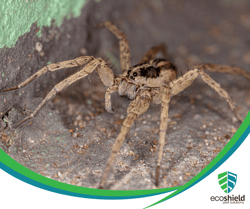 In terms of appearance, wolf spiders typically have stout bodies covered in hair, and their coloration can range from gray and brown to dark brown or even black. Their legs are often well-developed and adapted for rapid movement, aiding them in chasing and catching prey. Unlike some spiders that construct intricate webs to capture food, wolf spiders are active hunters and rely on their speed and agility to pounce on insects and other small creatures.
In terms of appearance, wolf spiders typically have stout bodies covered in hair, and their coloration can range from gray and brown to dark brown or even black. Their legs are often well-developed and adapted for rapid movement, aiding them in chasing and catching prey. Unlike some spiders that construct intricate webs to capture food, wolf spiders are active hunters and rely on their speed and agility to pounce on insects and other small creatures.
One key feature for identifying wolf spiders is their habit of carrying their egg sacs. Female wolf spiders carry their egg sacs attached to their spinnerets or held between their fangs, carrying them until the spiderlings hatch. This maternal behavior is unique to wolf spiders and can help homeowners differentiate them from other spider species.
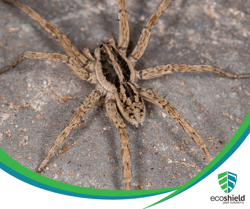 Encountering wolf spiders indoors is not uncommon, as they may seek shelter or chase prey. While these spiders may appear intimidating due to their size and active behavior, they are generally not harmful to humans. Understanding their distinctive features and behaviors can help homeowners appreciate the ecological role of wolf spiders as effective pest controllers.
Encountering wolf spiders indoors is not uncommon, as they may seek shelter or chase prey. While these spiders may appear intimidating due to their size and active behavior, they are generally not harmful to humans. Understanding their distinctive features and behaviors can help homeowners appreciate the ecological role of wolf spiders as effective pest controllers.
Hobo Spider
Identifying hobo spiders (Eratigena agrestis) can be important for homeowners, as these spiders are known for their potentially venomous bites. Hobo spiders are part of the funnel-weaver family and are typically brown or grayish-brown in color. They have a somewhat flattened appearance and can measure up to half an inch to two-thirds of an inch in body length, with a leg span that can extend beyond an inch.
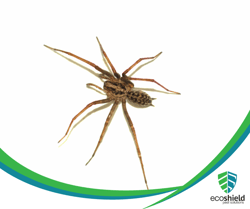 One key feature for identifying hobo spiders is the presence of a distinctive pattern on their abdomen. This pattern often includes chevron-shaped markings and various shades of brown. Additionally, hobo spiders have long, spinneret-free spinnerets (silk-producing organs) that extend noticeably beyond the end of their abdomen.
One key feature for identifying hobo spiders is the presence of a distinctive pattern on their abdomen. This pattern often includes chevron-shaped markings and various shades of brown. Additionally, hobo spiders have long, spinneret-free spinnerets (silk-producing organs) that extend noticeably beyond the end of their abdomen.
Hobo spiders are known for their funnel-shaped webs, which they construct in dark and quiet areas such as basements, crawl spaces, or corners of rooms. These webs serve as retreats for the spiders and are not meant for catching prey like some other spider webs. Hobo spiders are agile hunters and may leave their webs to actively pursue insects.
.png?width=250&height=210&name=Hobo%20Spider%20(1).png) It's important to note that hobo spiders are often mistaken for other harmless species, and proper identification can be challenging for non-experts. If homeowners suspect the presence of hobo spiders or are concerned about spider bites, they should seek professional assistance for accurate identification and appropriate pest control measures. Understanding the distinguishing features of hobo spiders can aid in creating a safer and more informed approach to coexisting with these arachnids.
It's important to note that hobo spiders are often mistaken for other harmless species, and proper identification can be challenging for non-experts. If homeowners suspect the presence of hobo spiders or are concerned about spider bites, they should seek professional assistance for accurate identification and appropriate pest control measures. Understanding the distinguishing features of hobo spiders can aid in creating a safer and more informed approach to coexisting with these arachnids.
American House Spider
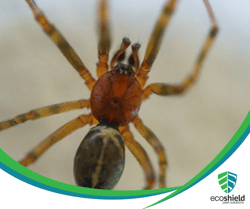 American house spiders, scientifically known as Parasteatoda tepidariorum, are common arachnids found in and around homes. Recognizing these spiders can be valuable for homeowners seeking to identify harmless species and foster a better understanding of their indoor environment. American house spiders are relatively small, with a body length of about a quarter of an inch to half an inch and a leg span that extends beyond their bodies. They typically have a mottled brown or gray coloration and may exhibit some faint markings on their abdomens.
American house spiders, scientifically known as Parasteatoda tepidariorum, are common arachnids found in and around homes. Recognizing these spiders can be valuable for homeowners seeking to identify harmless species and foster a better understanding of their indoor environment. American house spiders are relatively small, with a body length of about a quarter of an inch to half an inch and a leg span that extends beyond their bodies. They typically have a mottled brown or gray coloration and may exhibit some faint markings on their abdomens.
One distinctive feature of American house spiders is their web-building behavior. They construct messy, irregular webs in corners, windowsills, and other undisturbed areas. These webs serve as both a retreat and a means to catch prey, usually consisting of small insects that inadvertently get entangled in the silk strands.
While their webs may appear untidy, American house spiders are generally harmless to humans and play a beneficial role in controlling insect populations within homes. They are not aggressive and prefer to retreat to their webs when disturbed. Homeowners encountering American house spiders can appreciate their contribution to natural pest control and choose to coexist peacefully, especially considering their relatively benign nature. If spider webs become a concern, regular cleaning and maintenance can help manage their presence without the need for more drastic measures.
Sac Spider
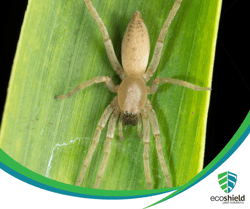 Identifying sac spiders can be useful for homeowners looking to understand the arachnid inhabitants in their homes. Sac spiders, belonging to the family Clubionidae, are named for their characteristic silk sacs or retreats. These spiders are generally small to medium-sized, with a body length ranging from about 1/8 to 3/8 inches. Their coloration varies, but they often have pale bodies with markings that can include shades of yellow, brown, or even green. Sac spiders have distinctive elongated jaws (chelicerae) that set them apart from some other spider species.
Identifying sac spiders can be useful for homeowners looking to understand the arachnid inhabitants in their homes. Sac spiders, belonging to the family Clubionidae, are named for their characteristic silk sacs or retreats. These spiders are generally small to medium-sized, with a body length ranging from about 1/8 to 3/8 inches. Their coloration varies, but they often have pale bodies with markings that can include shades of yellow, brown, or even green. Sac spiders have distinctive elongated jaws (chelicerae) that set them apart from some other spider species.
One key behavior that aids in sac spider identification is their use of silk retreats. These retreats serve as shelters during the day and are often attached to surfaces such as leaves, bark, or within the corners of buildings. Unlike some spiders that actively hunt, sac spiders are ambush predators that wait within or near their silk retreats for prey to come close.
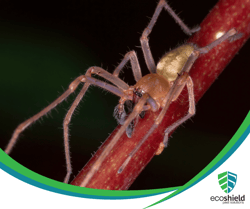 Sac spiders are known for their nocturnal habits, and homeowners may encounter them more frequently during the evening hours. While these spiders are generally considered harmless to humans, they may bite if threatened or provoked. The bites are typically mild and cause minor irritation, but it's essential to exercise caution and seek professional advice if homeowners are concerned about the presence of sac spiders or potential bites. Understanding their distinct characteristics and behaviors can contribute to a more informed and harmonious coexistence with these arachnids.
Sac spiders are known for their nocturnal habits, and homeowners may encounter them more frequently during the evening hours. While these spiders are generally considered harmless to humans, they may bite if threatened or provoked. The bites are typically mild and cause minor irritation, but it's essential to exercise caution and seek professional advice if homeowners are concerned about the presence of sac spiders or potential bites. Understanding their distinct characteristics and behaviors can contribute to a more informed and harmonious coexistence with these arachnids.
Funnel-weaver Spider
Identifying funnel-weaver spiders, also known as Agelenidae, can be helpful for homeowners looking to distinguish these arachnids from other spider species. Funnel-weavers are characterized by their unique web-building behavior, creating webs that resemble a funnel or tube. These webs typically have a flat sheet leading to a tubular retreat where the spider hides and waits for prey.
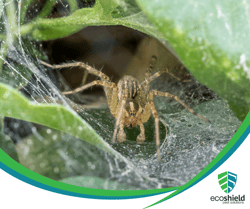 Funnel-weaver spiders have a robust and elongated body, with a leg span that can range from a quarter of an inch to over an inch, depending on the species. Their coloration varies, but they often exhibit shades of brown, gray, or tan. The distinctive feature of funnel-weavers lies in their silk retreats, which are commonly found in grassy or wooded areas, along walls, and in corners of buildings.
Funnel-weaver spiders have a robust and elongated body, with a leg span that can range from a quarter of an inch to over an inch, depending on the species. Their coloration varies, but they often exhibit shades of brown, gray, or tan. The distinctive feature of funnel-weavers lies in their silk retreats, which are commonly found in grassy or wooded areas, along walls, and in corners of buildings.
Unlike orb-weavers that actively wait for prey in the center of their webs, funnel-weaver spiders use their webs as a place of concealment, relying on their agility to quickly dart out and capture insects that come near. These spiders are generally harmless to humans and contribute to natural pest control by managing populations of flies, mosquitoes, and other small insects.
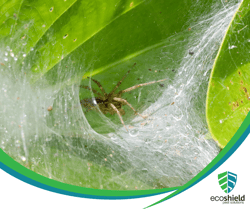 For homeowners encountering funnel-weaver spiders, understanding their web-building behavior and recognizing the characteristic funnel-shaped retreats can aid in identification. Appreciating their role in keeping insect populations in check can foster a sense of coexistence and help homeowners maintain a balanced indoor and outdoor environment.
For homeowners encountering funnel-weaver spiders, understanding their web-building behavior and recognizing the characteristic funnel-shaped retreats can aid in identification. Appreciating their role in keeping insect populations in check can foster a sense of coexistence and help homeowners maintain a balanced indoor and outdoor environment.
Can EcoShield prevent or remove spiders from my home?
Absolutely!
EcoShield offers spider solutions to serve every customer’s specific needs. Not only do we offer one-off spider services for those experiencing time-sensitive infestations, but spider removal and prevention are also included in the Shield Home Protection Plan. This service option includes four-season protection from a variety of pests (including spiders) and is guaranteed effective - if the pests come back, so do we… for free!
When we treat for spiders in your home, our eco-friendly products will also take care of other pests such as ants and other nest insects. When a spider squeezes through cracks in doors or a windowsill, it rubs its body across the products we use, and in a few days, the spiders will be eliminated and will offer long-lasting protection against spiders in your home.
Spider removal will begin with an initial service consultation in which a trained EcoShield pest technician will identify and evaluate the severity of the problem at hand. Our expert professionals thoroughly inspect the existing evidence of problem spiders and check for unidentified problem areas, points of entry, and other concerns. During this visit, you will receive a free, no-obligation quote to rectify your spider infestation quickly.
If you experience a problem with spiders in your home, give EcoShield a call immediately for safe, effective, and expert removal. You may also fill out the contact form on this page, and our expert technicians will help ensure your home is free from pest-related concerns. Our Shield Home Protection Plan is guaranteed to eliminate and prevent spiders from entering your home and provides year-round protection. If you are a customer and are experiencing spiders in your home, just give us a call, and we'll come out and treat your home for free!